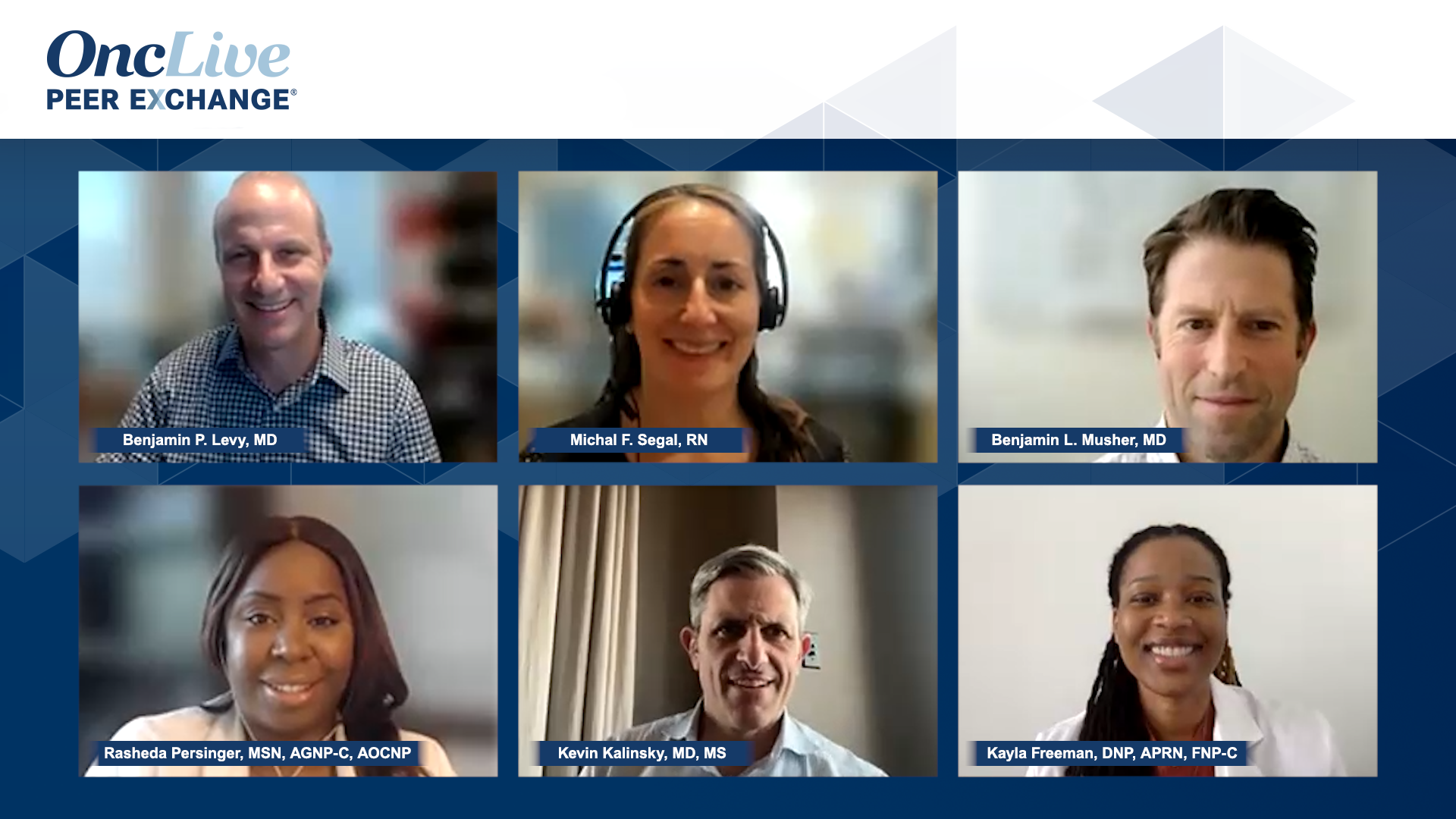- Advertise
- About OncLive
- Editorial Board
- MJH Life Sciences brands
- Contact Us
- Privacy
- Terms & Conditions
- Do Not Sell My Information
2 Clarke Drive
Suite 100
Cranbury, NJ 08512
© 2025 MJH Life Sciences™ and OncLive - Clinical Oncology News, Cancer Expert Insights. All rights reserved.
Mechanisms of Action of Antibody-Drug Conjugates
The expert panel discusses the history of antibody-drug conjugates and explores their mechanisms of action.
Sponsored in part by Daiichi Sankyo. Content independently developed by OncLive®.
Transcript:
Benjamin P. Levy, MD: Michal, can you walk us through what Kevin kind of touched on? What are the mechanisms of action of the ADC [antibody-drug conjugate]? I think there’s clearly one that was front and center, but we’re learning that these drugs may work differently than how we thought they were once proposed to work.
Michal F. Segal, RN: I think what we’re after is a high drug-to-antibody ratio and that improves the efficacy. In general, increasing the drug-to-antibody ratio increases the cytotoxicity, but it also increases the hydrophobicity aggregation and faster bloodstream clearance. I know we spoke briefly about the bystander effect, and the bystander effect is the idea that the drug seeps out into the target adjacent cells as well as the target cells. So in this case we’re talking about negative HER2+ [human epidermal growth factor receptor 2 positive] cells or HER2 low. The concern with increasing the drug-to-antibody ratio is that it could be a better killer, but it won’t have as many bystander effects and it would generally be more hydrophobic, which can then lead to undesirable outcomes. Generally, you want a higher expression antibody in tumors, but not in normal tissue with the hydrophilic linker payload of a compound that’s highly cytotoxic and permeable. That would be the desired end effect.
Benjamin P. Levy, MD: Michal, great overview. I’m going to ask an unfair question to both Ben Musher and Kevin Kalinsky. Are these drugs targeted therapy or are they chemotherapy? How should we view these? Ben, I’ll put you on the spot first. How do you explain this to a patient? Is this targeted therapy because it’s going after a specific protein in the cell? Is it chemotherapy? Is it both? Is it neither? What’s your impression of these drugs?
Benjamin L. Musher, MD: I would actually hedge and call it targeted chemotherapy. Instead of just getting chemotherapy into the bloodstream and exposing all cells to the cytotoxic element, we are trying to get the cytotoxic element into cells that express this receptor. So it’s a targeted way of delivering chemotherapy, hopefully decreasing collateral damage while really focusing the efficacy on the cells that need to be treated.
Benjamin P. Levy, MD: I like that answer. I have to say it’s like chemotherapy 2.0. Kevin, what are your thoughts on this?
Kevin Kalinsky, MD, MS: I would agree.I know we’ll get into some specific examples, but even if we think, for instance, sacituzumab govitecan, which is a Trop2 ADC. We don’t utilize Trop2 expression to determine who’s benefiting from the drug, and it may just reflect that we don’t really measure Trop2 particularly well. Or it could also be, as you mentioned, sending this missile to the cell. And if there’s any degree of expression, it’s going to be hitting that cell. So I do like the term targeted chemotherapy. Also understand that, increasingly, hopefully, we’ll have some targets that we’re personalizing and individualizing what we’re doing.
Benjamin P. Levy, MD: I wrestle with this in lung cancer. We’re learning that every single study that comes out in lung overexpression of a protein mix does not predict the efficacy of these drugs. So how do they work?Michal gave a nice overview. What are they doing at the level of the tumor? How are they engaging the target? How is this target internalizing the drug? I think we just have a nascent understanding of what’s happening here.
We’ve come a long way with these drugs. We’ve wrestled with this since the early 20th century. The whole idea of ADCs came out in 1910, at least the concept did. Fast forward to the year 2000 when the first ADC was approved for cancer. Gemtuzumab ozogamicin was FDA-approved for ALL [adult acute lymphoblastic leukemia]. It was then yanked due to fatal [adverse] effects and then reapproved in 2017. So we have to say that in the year 2000 was the first approved ADC, and we now have more than 12 FDA-approved ADCs. We have our first in lung. We may have another coming and more than 400 are in development. It’s a rapidly evolving field. And as we talk about ADCs in and of themselves, I think we’re at version 1 of what’s going to be a much more sophisticated way to deliver payloads with novel monoclonal antibodies and interesting linkers that hit that sweet spot of holding on to that payload in the circulation and then releasing it to the cell once it hits. And then these novel payloads as well that will hopefully elicit this bystander effect that Michal was talking about and Kevin mentioned, but other novel payloads that aren’t chemotherapy for us, at least from the 1980s, the deruxtecan derivatives or drugs that we use, etoposide and others, that are linked to these ADCs. But we need to do a little bit at least in terms of etoposide topoisomerase inhibitors for us. We need to better [the] payloads.
Transcript is AI-generated and edited for clarity and readability.
Clinicians referring a patient to MSK can do so by visiting msk.org/refer, emailing referapatient@mskcc.org, or by calling 833-315-2722.
Related Content:





